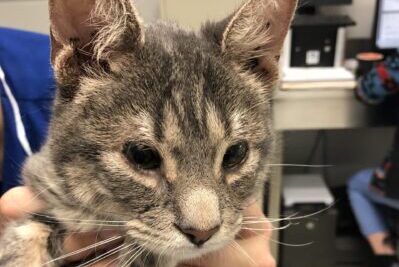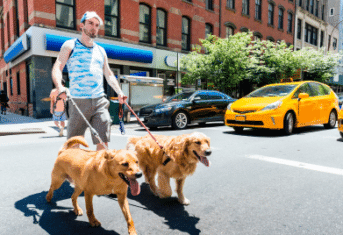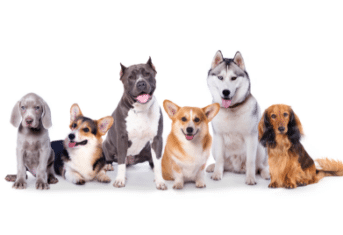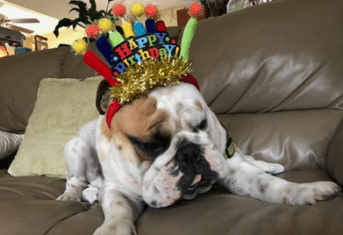Orthopedic Disorders – Knee Disorders
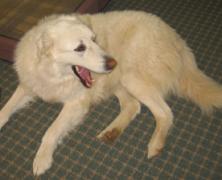
Orthopedic Disorders – Knee Disorders
*The following was originally printed in the Metropolitan Dog Club’s 2010 Blue Book.
Charlie, a 5 year old mixed breed was Sharon’s best pal and exercise buddy. Together the two would jog a couple of miles a day and on weekends hike the nearby hills. But recently, Charlie was not as enthusiastic about their workouts as he had been. In fact, he was even having difficulty standing from a lying down position. Sharon took Charlie to the vet, who considered orthopedic disorders of the hip, forelimb and knee as part of the dog’s reluctance to run.
The following blog post is part two of a three-part series about orthopedic disorders found in our pets — how they are manifested, potential methods of diagnosis and treatments. The decision to pursue these treatments would typically be made in concert with a canine orthopedic specialist and a canine rehabilitation specialist.
Stifle (Knee) Disorders
Patella luxation (kneecap dislocation) is a common condition that can result in an abnormal gait, pain and Osteoarthritis (OA). An intermittent skip followed by normal gait is common in dogs with patella luxation and is due to the poor mechanics of having a dislocated patella. Persistent pain or lameness may occur as cartilage begins to wear and OA develops. Long term abnormal biomechanics can also lead to deformities (bowing and curving) of the femur and tibia. The most common type of patella luxation is medial, meaning the patella dislocates to the inside (or medial) aspect of the knee, however lateral patella luxations also occur. Small and toy breed dogs are most commonly affected but large breed dogs can also be affected. Patellar luxations are graded based on severity. A grade 1 luxation is the mildest form and indicates that the patella periodically dislocates. A grade 4 luxation is the most severe form and indicates a dislocated patella, which cannot be pushed into its normal position. The diagnosis is based on physical examination and x-rays. A CT scan is sometimes required to better evaluate limb alignment and to plan surgery.
Orthopedic surgeons do not advocate treatment of adult dogs showing minimal signs without evidence of arthritis. Surgery is indicated in lame pets and may be indicated in juvenile dogs to prevent secondary growth deformities. The goal of surgery is to improve biomechanics, to mitigate the progression of arthritis and to prevent secondary growth deformities. Multiple surgical techniques are typically used to stabilize the patella, such as recession trochleoplasty, tibial tuberosity transposition, and retinaculum and capsular release/imbrication.
Cranial Cruciate Ligament (CrCL) injuries are some of the most common causes of lameness in dogs. The ligament may be completely or partially ruptured and is thought to occur secondary to a chronic, slow degeneration of the ligament. Occasionally, acute ruptures from overloading the knee (“football knee”) are seen in dogs. Although CrCL ruptures are common in all breeds of dogs and cats, large breed dogs are affected most often. A ruptured CrCL is diagnosed by demonstrating instability in the knee, or by visualization during surgery.
Since a ruptured CrCL will not heal on its own, orthopedic surgeons recommend restoring stability to the knee through surgery. Treatment to achieve maximal, long term comfort and optimal function includes: surgical stabilization of the knee, post operative physical rehabilitation and long term weight/dietary management.
Surgeries can be divided into dynamic stabilization techniques and static techniques. Dynamic stabilization procedures include the tibial plateau leveling osteotomy (TPLO) and the tibial tuberosity advancement (TTA), while the most common technique to provide static stabilization of the stifle is lateral suture technique. The Tightrope™ technique is a newer modification of the lateral suture technique that is gaining in popularity. Orthopedic surgeons determine the appropriate procedure for an individual dog by taking into account the dog’s size, activity level and measurements from x-rays.
Although OA is present in all cases, the prognosis for full return to function after healing and rehabilitation with surgical stabilization is very good. The best preventative measure for CrCL rupture is to maintain your dog’s optimal body weight with consistent physical activity, avoiding the “weekend warrior” syndrome.
Rehabilitation therapy plays a role in the management of orthopedic diseases as an adjunct to surgery or in cases not requiring surgery. Low impact exercise, including work on an underwater treadmill to provide buoyancy to the limbs as the pet works to regain strength and stamina, can be very beneficial to recovery. Deep tissue ultrasound and electrostimulation are also gaining in popularity for the treatment of canine musculo-skeletal disorders. Acupuncture benefits many dogs with orthopedic diseases.
If your pet appears to be having trouble standing, walking or running, please consider consulting an orthopedic specialist at The Animal Medical Center. The AMC also provides rehabilitation therapy and acupuncture for dogs with orthopedic disorders. To make an appointment, call 212.838.8100 today.
________________
About the Authors:
Dr. Marc Havig, DACVS is currently a staff surgeon at The Animal Medical Center, and the interim Chair of the Department of Surgery. Dr. Havig specializes in orthopedic surgery and has a special interest in canine sports-related injuries.
–
Dr. Ann E. Hohenhaus is a Diplomate of the American College of Veterinary Internal Medicine, certified in both Oncology and Small Animal Internal Medicine. She has over 20 years of experience as a practicing veterinary oncologist in New York City.
–
___________________
For nearly a century, The Animal Medical Center has been a national leader in animal health care, known for its expertise, innovation and success in providing routine, specialty and emergency medical care for companion animals. Thanks in part to the enduring generosity of donors, The AMC is also known for its outstanding teaching, research and compassionate community funds. Please help us to continue these efforts. Send your contribution to: The Animal Medical Center, 510 East 62nd Street, New York, NY 10065. For more information, visit www.amcny.org. To make an appointment, please call 212.838.7053.































